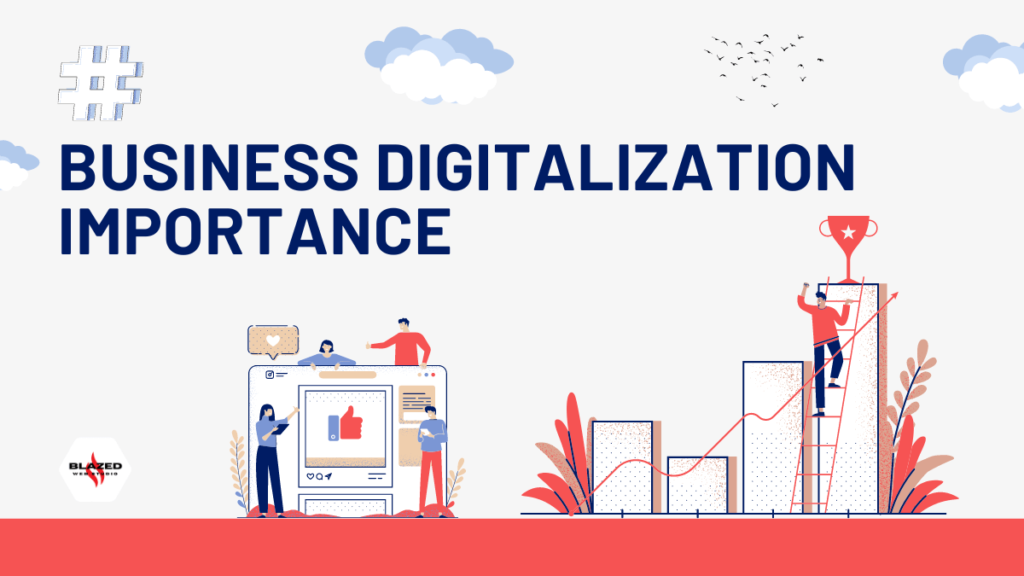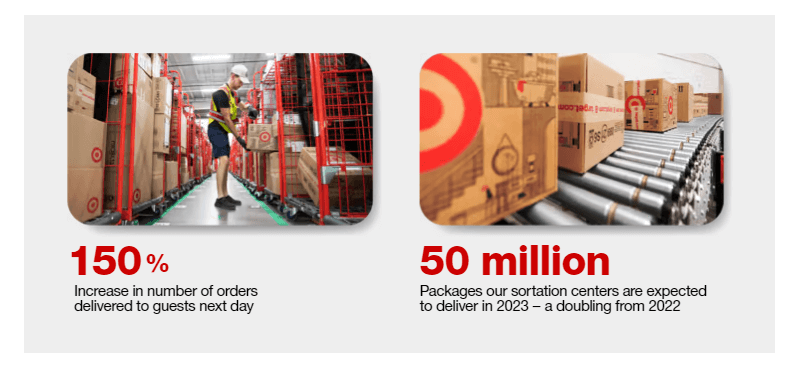In this blog post, we’ll discuss the importance of digitalization of business, and then I’ll take you step by step on how to digitalize your Business. So, let’s jump into that.
What you will read in this blog post.
- The importance of digitalization in business?
- Some statistics about different companies that got a huge achievement via digitalization.
- Pakistani Companies.
- International Companies.
- How to digitalize business.
- Effective Strategies for digitalization and the best tools for them.
- According to the scope of business.
- For Small Business.
- For Medium Business.
- For Large Business.
- Beyond the Tools: Cultivating a Digital Mindset.
- Conclusion.
In today’s connected world, everyone knows the phrase “business digitalization” it is not futuristic anymore; it’s a critical question for the survival and success of businesses. Whether you’ve a multinational business or running a small shop in town, embracing business digitalization is no longer optional – it’s the bridge to a wider audience, streamlined operations, and sustained growth.
1. The importance of digitalization in business.
The advantages of business digitalization are numerous and undeniable. Here are just a few key benefits:
- Global Reach: Establishing a digital presence allows businesses to transcend geographical boundaries, reaching a global audience and expanding market opportunities.
- Enhanced Visibility: A strong online presence increases visibility, making it easier for potential customers to discover and engage with your business through search engines, social media, and other digital channels.
- Customer Engagement: Digital platforms enable direct interaction with customers through social media, email, and other communication channels, fostering stronger relationships and understanding customer needs.
- Cost-Effective Marketing: Digital marketing tools offer cost-effective alternatives to traditional advertising, allowing businesses to target specific demographics, measure campaign performance, and optimize marketing budgets.
- 24/7 Availability: A digital presence ensures constant accessibility for customers, allowing them to access information, make purchases, or engage with your business at any time, providing convenience and flexibility.
- Data-Driven Insights: Digital analytics tools provide valuable data on customer behavior, allowing businesses to analyze trends, track performance, and make informed decisions for continuous improvement.
- Competitive Edge: In a digital era, having an online presence is crucial for staying competitive. Businesses that embrace digital channels are better positioned to adapt to market changes and technological advancements.
- Brand Credibility and Trust: A well-maintained digital presence contributes to brand credibility. Engaging content, positive reviews, and a professional website build trust and confidence among potential customers.
- Cost-Effective Customer Support: Online platforms facilitate efficient customer support through chat, email, or social media, reducing the costs associated with traditional customer service channels.
- E-commerce Opportunities: A digital presence opens doors to e-commerce, allowing businesses to sell products or services online, expanding revenue streams and catering to the growing trend of online shopping.
- Adaptability and Innovation: Digital platforms provide a dynamic environment for innovation and adaptation. Businesses can experiment with new technologies, trends, and customer preferences to stay relevant and innovative.
- Measurable ROI: Digital marketing efforts are measurable, allowing businesses to track return on investment (ROI) accurately. This data-driven approach enables continuous refinement of strategies for optimal results.
- Community Building: Online platforms facilitate the creation of a community around your brand. Engaging with your audience through forums, social media groups, or online events fosters a sense of belonging and loyalty.
- Scalability: A digital presence allows businesses to scale more easily, whether it’s expanding product offerings, entering new markets, or accommodating increased customer demand.
- Feedback and Improvement: Digital channels provide instant feedback from customers. This feedback loop helps businesses identify areas for improvement, refine products or services, and enhance overall customer satisfaction.
2. Some amazing stats about different companies.
These companies got huge achievements by digitalizing their business.
Pakistani Companies:
E-commerce:
- Daraz: One of Pakistan’s leading e-commerce platforms, Daraz, saw its Gross Merchandise Value (GMV) grow by over 100% between 2020 and 2022. This growth was driven by factors like improved logistics, mobile app penetration, and targeted marketing campaigns.
(Source: ecommercedb). - Careem: Became a leading ride-hailing app in Pakistan and the Middle East, later acquired by Uber for $3.1 billion. As of 2019, Careem had over 15 million users and 600,000 captains across 12 countries. (Source: Careem Press Release)
Fintech:
- Easypaisa: This mobile wallet service, offered by Telenor Microfinance Bank, has revolutionized financial inclusion in Pakistan. With over 17 million users, Easypaisa facilitates digital payments, money transfers, and bill payments. (Source: Statista).
- JazzCash: Another major mobile wallet provider, JazzCash, has seen significant growth in its user base and transaction volume. They offer various financial services like micro-loans, investments, and insurance. (Source: Statista).
- SadaPay: Although being newly established in 2021 SadaPay has grown very fast with over 5 million users in 2024. (Source: Statista).
Other:
- Pakistan International Airlines (PIA): PIA has used digital marketing to improve its brand image and attract new customers. They’ve launched targeted online advertising campaigns, created engaging social media content, and partnered with travel influencers to showcase their destinations and services. This has resulted in increased brand awareness and ticket sales.
International Companies:
- Walmart: Invested heavily in e-commerce and omnichannel fulfillment, leading to a 97% increase in online sales in 2021.
- Target: Launched same-day delivery services and a personalized shopping app, resulting in a 20% increase in digital sales in 2022. (Source: Target News)

- Nike: Nike uses a data-driven approach to personalize its marketing campaigns and customer service. They leverage analytics to understand customer behavior and preferences, which allows them to create targeted ads and content that resonates with their audience. This strategy has helped Nike to increase brand engagement and sales.
- Results: Nike’s digital marketing strategy has been highly successful. The company has seen a significant increase in brand awareness, social media engagement, and website traffic. In 2023, Nike reported that its digital sales grew by 24%, accounting for 38% of its total revenue. (Source: Nike Investor relation report 2023 )
- Starbucks: Starbucks has a strong social media presence, with over 200 million followers on Facebook, Instagram, and Twitter. The company uses social media to connect with customers, share stories, and promote its products and events. Starbucks also runs successful influencer marketing campaigns, partnering with popular social media personalities to reach new audiences.
- Results: Starbucks’ social media strategy has effectively driven brand engagement and sales. The company’s social media followers are highly engaged, and Starbucks’ posts often go viral. In 2023, Starbucks reported that its social media marketing efforts helped to drive a 7% increase in customer transactions. (Source: Investor Report 2023)
- GoPro: GoPro is a camera company that targets a niche audience of adventure enthusiasts. The company uses social media to showcase user-generated content and inspire potential customers. GoPro also runs effective influencer marketing campaigns, partnering with athletes and outdoor adventurers to promote its products.
- Results: GoPro’s social media strategy has been very successful in reaching its target audience and driving sales. The company’s social media followers are highly engaged, and GoPro’s videos often go viral. In 2023, GoPro reported that its social media marketing efforts helped to drive a 10% increase in camera sales. (Source: Investor Relation Report will be announced on Feb 2024)
- Sephora: Sephora is a beauty retailer that uses a data-driven approach to personalize its marketing campaigns. The company collects data on customer purchases and browsing behavior, which it uses to send targeted emails and recommendations. Sephora also uses social media to connect with customers and share beauty tips and trends.
- Results: Sephora’s digital marketing strategy has been very successful in driving sales and customer engagement. The company’s personalized emails and recommendations are highly effective, and its social media presence is popular with beauty enthusiasts. In 2023, Sephora reported that its digital sales grew by 15%. (Source: LVMH)
- Warby Parker: Warby Parker is an online retailer that sells prescription glasses and sunglasses. The company uses social media to connect with customers and promote its products. Warby Parker also runs effective influencer marketing campaigns, partnering with fashion bloggers and celebrities to reach new audiences.
- Results: Warby Parker’s social media strategy has successfully driven brand awareness and customer acquisition. The company’s social media followers are highly engaged, and Warby Parker’s posts often go viral. In 2023, Warby Parker reported that its social media marketing efforts helped to drive a 20% increase in sales. (Source: EXTOLE)

3. Effective Strategies for Business Digitalization
Having established the “why,” let’s explore the “how.” Here are some key strategies to initiate your business digitalization journey:
- Embrace Email Marketing:
Email remains a powerful marketing tool. Build an email list, craft engaging newsletters, for instance, asking for a signup in reward of a free e-book, a discount, and get the leads, and then launch targeted campaigns to nurture leads, drive sales, and build brand loyalty. Platforms like Mailchimp Constant Contact or Hubspot offer user-friendly interfaces and analytics tools to maximize your email marketing efforts. I have used Mailchimp which has ease of use. The pricing is mentioned in later section. - Leverage Social Media Advertising:
Facebook and Google are tech giants and have a huge audience that you can reach to market your business. Facebook Ads and Google Ads offer incredible reach and targeting capabilities. Both platforms design compelling ad campaigns on the fundamentals of the funnel or customer journey to reach your ideal audience, promote your products or services, and drive traffic to your website. Tools like Facebook Ads Manager and Google Ads Campaign Manager allow you to track performance, optimize budgets, and maximize your return on investment. - Optimize Website SEO:
Your website is your digital storefront. Search Engine Optimization (SEO) is a way to ensure your website ranks high in search engine results, making it easily discoverable by potential customers when they search on Google, related to your services. Tools like Google Search Console, Ahrefs, or Semrush provide insights into your website’s performance and help you identify areas for improvement. You should also combine it with Google Analytics which analyzes your traffic. Some extra tools provide more valuable information, like crazy egg, which is a heat map tool that helps you identify the areas where visitors click more, for instance, any image or a particular paragraph in the whole blog. We will discuss this tool in particular in our coming blog post so stay tuned to our blog post via our newsletter. - Invest in Content Marketing:
“Content is king” This is the saying of Neil Patel and many other Digital Marketing gurus. If any business wants to attract and engage the targeted traffic, then high-quality, informative content attracts and engages your audience. So, create blog posts, infographics, videos, and other engaging content that showcases your expertise, builds trust, and drives organic traffic to your website. And for that content management systems like WordPress and Squarespace simplify content creation and management. - Utilize Customer Relationship Management (CRM) Tools:
CRM platform centralizes customer data, tracks interactions, and streamlines more than communication. This fosters stronger customer relationships, improves sales efficiency, and provides valuable insights into customer behavior. As your business grows and you get a lot of customers, I would say even if you have 100 customers approx you must have a CRM. Popular CRM platforms include Salesforce and HubSpot. By the way, I am HubSpot Inbound Certified, and I found it very helpful, but to be honest, it’s a huge system so, you definitely need a team of at least 3 members. And HubSpot has a free plan available forever, and also a startup plan which is just $18/mon.
4. According to the scope of business
I. Small Business:
a. Departments (Team Size): Job Responsibilites.
- Content Writing (1-2): Focus on crafting engaging content for various platforms.
- Graphic Design (1, outsource as needed): Create visuals like social media graphics and website images.
- Social Media Management (1): Manage social media presence, engage with the audience, and create content.
- Website Development & Content Management (1): Build and maintain basic website functionality.
- SEO (1): Implement foundational SEO strategies for website visibility.
- Email Marketing (1 specialist): Managing email marketing campaigns.
b. Best Tools and their pricing:
- Content Writing: The Google Docs Editor free version is good to go, but for productive teamwork in an isolated and more secure environment, consider the Google Workspace starting plan for $6/user/mon), Grammarly free is enough.
- Graphics Design: You need to buy Canva Pro. For 1 person $6.49/mon, for a team up to 5, $12/mon.
- Social Media Management: Canva has a social media planner in the paid plan that I have used personally, its good enough. Hootsuite Free Plan, Buffer, Later
- Website Development & Content Management: WordPress, is very easy to use and enough of startups.
- SEO: Google Search Console for website SEO audit (always free), Ahref is also used for SEO audit (Forever Free, but many features, like “competitor analysis” need to be paid plan). AIOSEO free plugin for improving On-Page SEO is enough.
- Email Marketing: Mailchimp (Free/Paid plans start at $6/month)
II. Medium Business:
a. Departments (Team Size):
- Content Writing (2-3, specialized in different formats): Develop diverse content, including blog posts, articles, and social media captions.
- Graphic Design (1-2): Create high-quality visuals for various marketing materials.
- Social Media Management (1-2): Implement paid advertising and analyze social media performance.
- Media Buyer/Advertising (1 or outsource): Manage PPC campaigns and other paid advertising initiatives.
- Website Development (1-2): This role can be for 6 mon or 1 year contract. Build and maintain a more complex website with custom features, for instance, a medium size business may offer their services or products on website. So, you need a pro developer to manage this.
- Website Content Management (1): Manage website content updates and ensure website health.
- SEO (1, consider dedicated SEO tools): Implement advanced SEO strategies for better ranking.
b. Tools (Paid options with free trials):
- Content Writing: Grammarly free plan is enough, You may need ChatGPT 4. But there are many AI tools that speed up the writing process.
- Graphics Design: Once again Canva is good for most of designs but Figma is used for interace design and only needed for short time. Here is Figma free plan is enough.
- Social Media Management: Canva Social Media Planner, Buzzsumo
- Media Buyer/Advertising: Google Ads, Facebook Ads Manager, LinkedIn Ads
- Website Development: WordPress (self-hosted), Shopify ( for e-commerce) is good for mid-size-business.
- Website Content Management: WordPress
- SEO: Same tools and pricing as mentioned in Small business section.
III. Large Business:
a. Departments (Team Size):
- Content Marketing Team (Multiple writers, editors, strategists): Create comprehensive content strategies and diverse content formats.
- Design Team (Graphic designers, web designers, UI/UX designers): Develop a consistent brand identity across all marketing materials.
- Social Media Marketing Team (Community managers, social media analysts): Implement advanced social media marketing strategies and analyze performance data.
- Digital Marketing Team (Paid search specialists, display advertising specialists, marketing automation specialists): Manage complex digital marketing campaigns across various channels.
- Web Development Team (Front-end developers, back-end developers, DevOps engineers): Build and maintain highly scalable and secure websites and applications.
- Content Management System (CMS) Team: Manage and optimize the CMS platform for efficient content management.
- SEO Team (SEO specialists, technical SEO specialists): Implement sophisticated SEO strategies and monitor website performance.
b. Tools (Enterprise-level solutions with custom pricing):
- Large-size-business might need paid plans.
- (For the time being, we’re not able to facilitate large-scale-orgs, but in near future we will).
5. Beyond the Tools: Cultivating a Digital Mindset
While tools and platforms play a crucial role, successful business digitalization goes beyond mere technology. It requires a shift in mindset, embracing a data-driven approach, and fostering a culture of continuous innovation. Here are some key aspects to consider:
- Invest in Employee Training: Having the right tools is an edge but it’s incomplete if you don’t have the right team to use them. Now you may hire a third party. But the best option is to make your team an expert 🙂. So, equip your team with the skills and knowledge necessary to navigate the digital landscape. Encourage tech-savviness and provide training on relevant tools and platforms.
- Embrace Data and Analytics: Data is a valuable resource. Analyze customer behavior, monitor website performance, and evaluate campaign effectiveness to gain actionable insights and optimize strategies. We’ve discussed in detail the strategies and tools in (effective strategies) section.
- Promote Innovation and Experimentation: Don’t be afraid to try new things. Experiment with different digital tools, explore emerging technologies and adapt your strategies based on data and feedback.
6. In Conclusion: Digitalization or Face Disruption
The digital revolution is not a passing trend; it’s a new reality. Businesses resisting digitalization risk falling behind in the dynamic online marketplace. By embracing digital transformation, businesses unlock possibilities such as enhanced efficiency, broader reach, deeper customer engagement, and sustainable growth. Take the leap, embrace business digitalization, and witness your business thrive in this exciting digital age.


